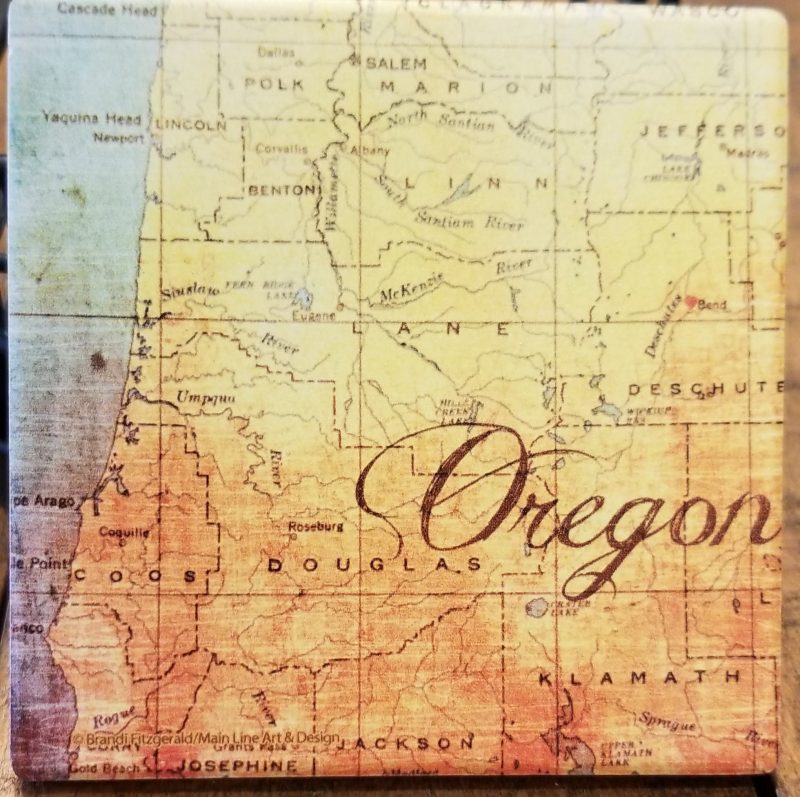
Although grapes have been planted in the Oregon Territory as far back as 1847, the 1960’s and 70’s were a time of rebuilding after the end of Prohibition in 1933. Many winemakers threw their hat in the ring and made the trek to Oregon in an attempt to grow grapes in a very different terrain than what they were used to, especially those familiar with the Mediterranean and mild climates of California.
Well-known names like Dick and Kina Erath, Dick and Nancy Ponzi, Susan and Bill Sokol Blosser, David and Diane Lett, and David and Ginny Adelsheim put down roots around the state of Oregon and started vineyards. Some had education and training in viticulture, some didn’t. Most had a pioneering spirit. It is this pioneering spirit that has seen them through all the trials and tribulations of grape growing and winemaking in a new frontier.
Susan Sokol-Blosser chronicles their pioneer spirit in her book “At Home in the Vineyard: Cultivating a Winery, an Industry and a Life” taking a leap of faith and moving to Oregon without farming or winemaking experience or knowledge, buying property and planting grapes. But with no tradition of fine winemaking in the state, they helped to create one. This took perseverance. This took collaboration. The struggle was real. Through trial and error she and her husband finally had their first vintage in 1977.
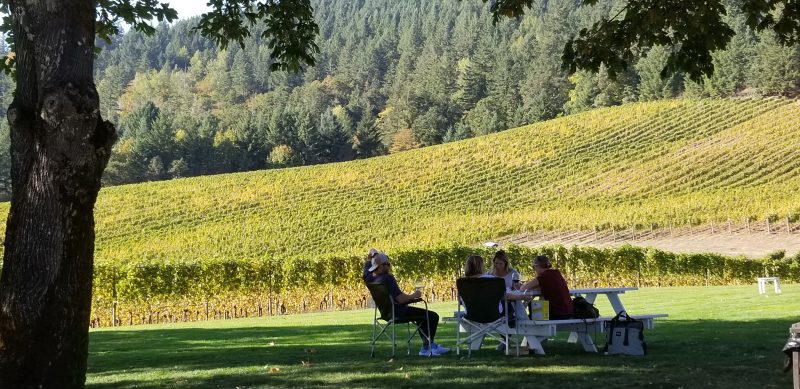
Oregon vineyards in the Fall 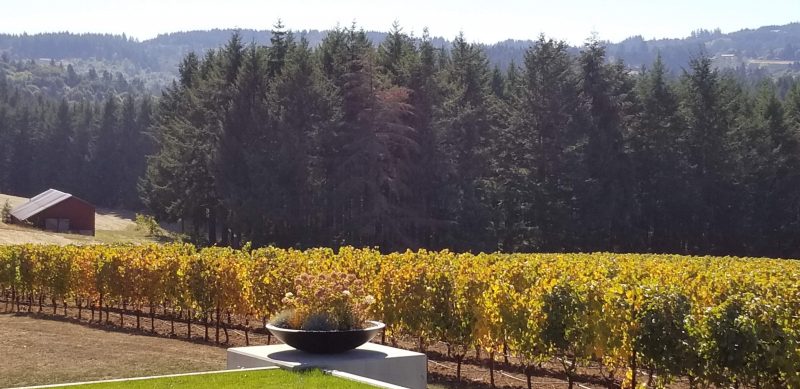
By 1979 the Oregon wine industry was recognized when in Paris, the Eryie Vineyards’ 1975 South Block Reserve scored in the top ten in its category at the Wine Olympiad, according to Wikipedia. In 1980, the winners of the Olympiad were challenged to a rematch and the same wine placed second. Suddenly Oregon was a force in the wine world.
Wineries grew in leaps and bounds with other pioneers rising to the challenge. By 1990 there were 70 bonded wineries and 320 growers. Then came disaster; phylloxera. Time to replant, rethink and resurface stronger than ever. Pioneers.
Eventually areas were separated into AVAs and the Oregon Wine Marketing Coalition was formed. All the while people collaborated. They talked. They discussed. They strategized. They helped each other. And that has never ended.
“I remember being impressed by the close community when I visited Oregon for the International Pinot Noir Celebration (IPNC) while I was a winemaker in California,” said Anthony King of The Carlton Winemakers Studio. “The Oregon winemakers were friendly and welcoming to those of us from out-of-state, but extremely close and familiar with one another. Now that I’ve been here for thirteen years, I know that camaraderie is true. That spirit, I think, comes from the founders of the industry, who helped each other in the beginning and have continued to help the industry through combined efforts to tell the story of Oregon wine.”
In 1999, HB3429 was passed by state legislators allowing multiple winery licenses on a single premise and The Carlton Winemakers Studio was formed shortly after, in 2002. This unique shared facility, pioneered by Eric Hamacher, Luisa Ponzi and Ned and Kirsten Lumpkin as an incubator and home for multiple producers is the ultimate in collaboration.
Today Anthony King is one of the winemakers at The Carlton Winemakers Studio and consults as the General Manager. When asked about collaboration at the Studio, he mentioned an ongoing project with Patrick Reuter at Dominio I, who was one of the first winemakers at the Studio during its first year. “In 2015, Patrick and I started a collaborative project that we named after our grandmothers: ‘Agnes and Luisa.’ It focuses on Italian varietals and is meant to be a learning experience and exploration. The 2015 Vermentino sold out very quickly when Patrick and I stuffed it all in the back of my car and drove it around Portland. So fun. Otherwise, we all help each other; Jerry Murray of Project M explained to someone just today that it is easier just to help someone and know that you’ll likely need some help sometime later that day. I, for one, love that I can walk around the Studio with a barrel or tank sample and ask ten winemakers whom I respect what they think of it. I love that about the Studio,” King said.
“Every wine region claims to be collaborative, but in Oregon it’s truly a close-knit environment. I have worked in other wine regions and this one really does feel genuinely tight–people make wine together, share equipment, come together to help each other when disaster strikes, and trade knowledge and advice. I’ve been told by several owners that when they started out the community was incredibly supportive of them throughout the learning curve of starting a winery,” said Julia Burke, Marketing and Communications Coordinator for the Willamette Valley Wineries Association.
Vintners Associations and Wine Festivals
Oregon wineries have a multitude of Vintners Associations and Wine Boards that transcend AVAs. “The Oregon Wine Board(OWB) covers the whole state, focusing the efforts of AVAs across the state. That organization hosts the Oregon Symposium each year in Portland that is well attended by winemakers, cellar workers, marketing folks, direct to consumer and national sales people. The seminars are designed by people in our industry and each year are pertinent to our ongoing conversations. We also have a research group that reviews research proposals and allocates OWB funds to wine and vineyard research annually,” King said.
“The International Pinot Noir Celebration (IPNC) is based in McMinnville and brings us together annually to showcase our wines in the context of some of the best Pinot Noirs in the world; we often find ourselves discussing and formulating seminars that we hope both the winemakers and attendees will find compelling,” King said. “The Oregon Chardonnay Celebrationis similar but has not been quite as developed as IPNC, but gets better every year. Oregon Pinot Camp (OPC) is probably the ultimate of collaboration in Oregon. Each year 280 sommeliers and buyers come from across the country to visit, taste, and attend small, intimate seminars. Planning takes the entire year and the seminars are in a constant state of evolution. Although not all the wineries participate in OPC, I believe that it continues to be the kindling for our industry’s collaboration. Collaboration is a regular topic of conversation with the sommeliers and buyers. They all love the collective spirit and typically one or two of them each year ends up moving here to be a part of it.”
“The vast majority of the wineries in this region belong to associations–most of them belong to several, as there are smaller nested AVA associations and then our organization and the Oregon Winegrowers Association and Oregon Wine Board and others. I have noticed a tremendous willingness to talk out differences and resolve issues as a community. Everyone has an eye on perspective and the bigger picture,” Burke said.
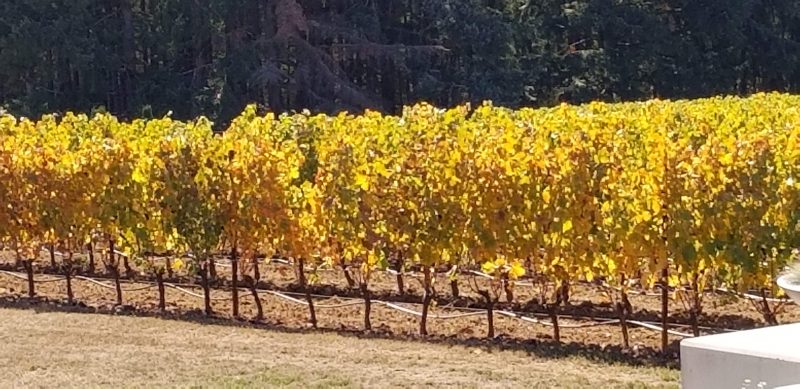
Helping Each Other Out
In the spirit of collaboration, Tim Ramey of Zenith Vineyards in the Eola-Amity Hills said, “I agree that winemakers are collaborative. We have collaborated on the winemaking of Auxerrois with several other winemakers who are interested in making this varietal. We hosted a dinner with 25+ winemakers and no public to taste 25+ examples of this varietal from around the world. Our annual winemaker dinner is a great example of this. We invite all of the winemakers who produce wines from Zenith and they come and present their wines to each other where the common denominator is vintage and Zenith – the variables are winemaking and vineyard block. It is hugely informative.”
“We borrow equipment, we help each other with vineyard problems. I have even harvested grapes at Seven Springs as a favor to a winemaker since in 2006 there was no one to harvest,” Ramey said.
Tasting Groups
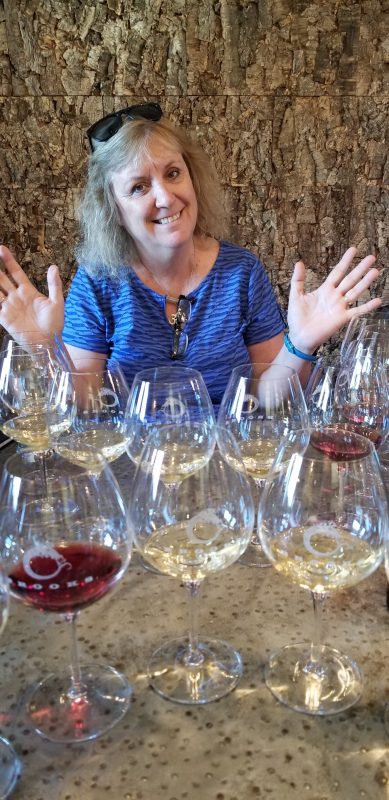
“Most winemakers have tasting groups or cellar crawls where they visit each other’s cellars throughout the year,” King said. “One group has been tasting together for years and started https://www.cellarcrawlwines.com. Their tastings have likely helped us all to be better winemakers, as they learned from each other and then passed that knowledge on to the rest of us.”
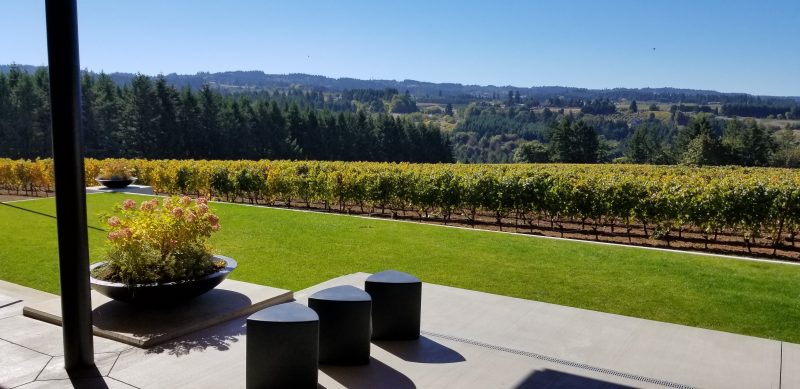
“Camaraderie is a part of Oregon’s culture; people are neighborly and value community over competition. Part of it is that we’re a young region; our founders had already observed other wine regions around the world and came here with intent, and they knew that a rising tide lifts all ships (pardon the cliché). Part of it is that we have one focal grape, Pinot noir, and yet an incredible diversity of sites, and it would be crazy not to share knowledge and experience with each other. And I think the biggest factor is that about 70% of the wineries in Oregon produce less than 5,000 cases, which means we trend very small. We have a lot of small producers who rely on each other, and the larger producers remember what it was like to be just getting started,” Burke said.

